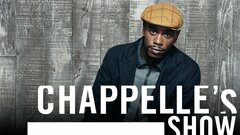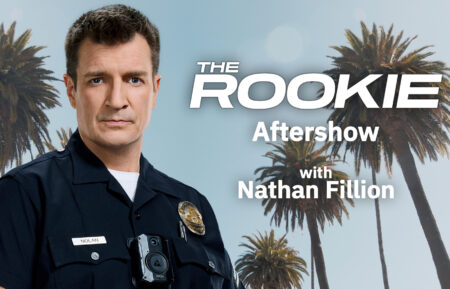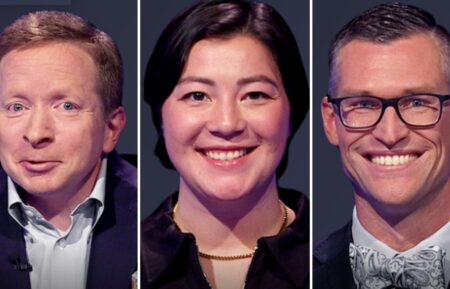‘Chappelle’s Show’ Turns 20: Have We All Forgotten How Brilliant It Was?
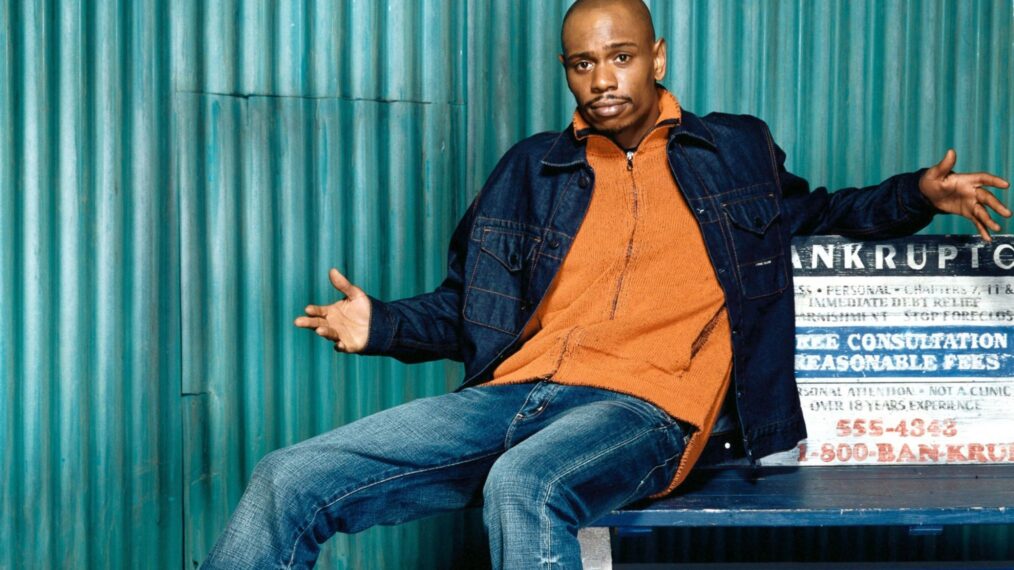
Opinion
When Chappelle’s Show debuted on Comedy Central 20 years ago on January 22, 2003, nobody knew who Dave Chappelle was, outside of a few brief appearances in Robin Hood: Men in Tights, Con Air, and Blue Streak in 1999.
Mainstream didn’t associate him with stand-up, despite his very first special, Killin’ Them Softly, airing on HBO in 2000, and sketch comedy series like SNL and its ‘edgier cousin’ MadTV were reaching a lull as audiences entered the new millennium. But after the first episode and the closing Clayton Bigsby sketch, which introduced the concept of a black White supremacist, audiences were forced to sit up and pay attention to the man responsible for making them laugh so hard.
Not only is the sketch edgy, but it also showcases the silliness of racism as an idea, how anyone is susceptible to being racist, and juggles the subject while remaining humorous. It’s very difficult to be funny while leaving food for thought, but this became the lasting signature of every great Chappelle’s Show sketch.
Decade Defining Television
After its premiere, the comedy series was a hit and became prime-time television as the season went on.
Sketches such as “The Mad Real World,” “Wu Tang Financial,” and “R. Kelly‘s “Piss on You” music videos became part of the pop culture lexicon. They were funny examinations of current events, with humorous, contemporary elements, such as the structure of reality television (and its single inclusion of black participants), financing with a firm you can trust (like RZA & GZA from Wu-Tang), as well as us as a society turning a blind eye on the now convicted Pied Piper of R&B.
As such, not only did the show grab the attention of adults, but teenagers also tuned in, and by the time it got to its second season, Dave Chappelle became a household name. People began to go back to his earlier HBO special, which has since become a classic and is often considered his best stand-up routine to date.
Comedy Central had a winning formula. In 2004, the show provided the network with its biggest hit since South Park debuted in 1998. Thanks to the comedian, the channel saw its rating increase by 28 percent that year. The channel’s prime-time audience averaged 821,000 viewers during Season 2— becoming one of the fastest-growing cable networks in the landscape during that time. Following the news, Chappell’s Show earned Emmy nominations for Outstanding Variety, Music, or Comedy Series and Outstanding Writing for a Variety, Music, or Comedy program. That same year, the first season sold 2 million DVD units, making it the best-selling DVD ever during that time.
That same year, his Showtime special For What It’s Worth was released, and it has since joined Killin’ Them Softly as one of his greatest stand-up routines to date, according to many critics.
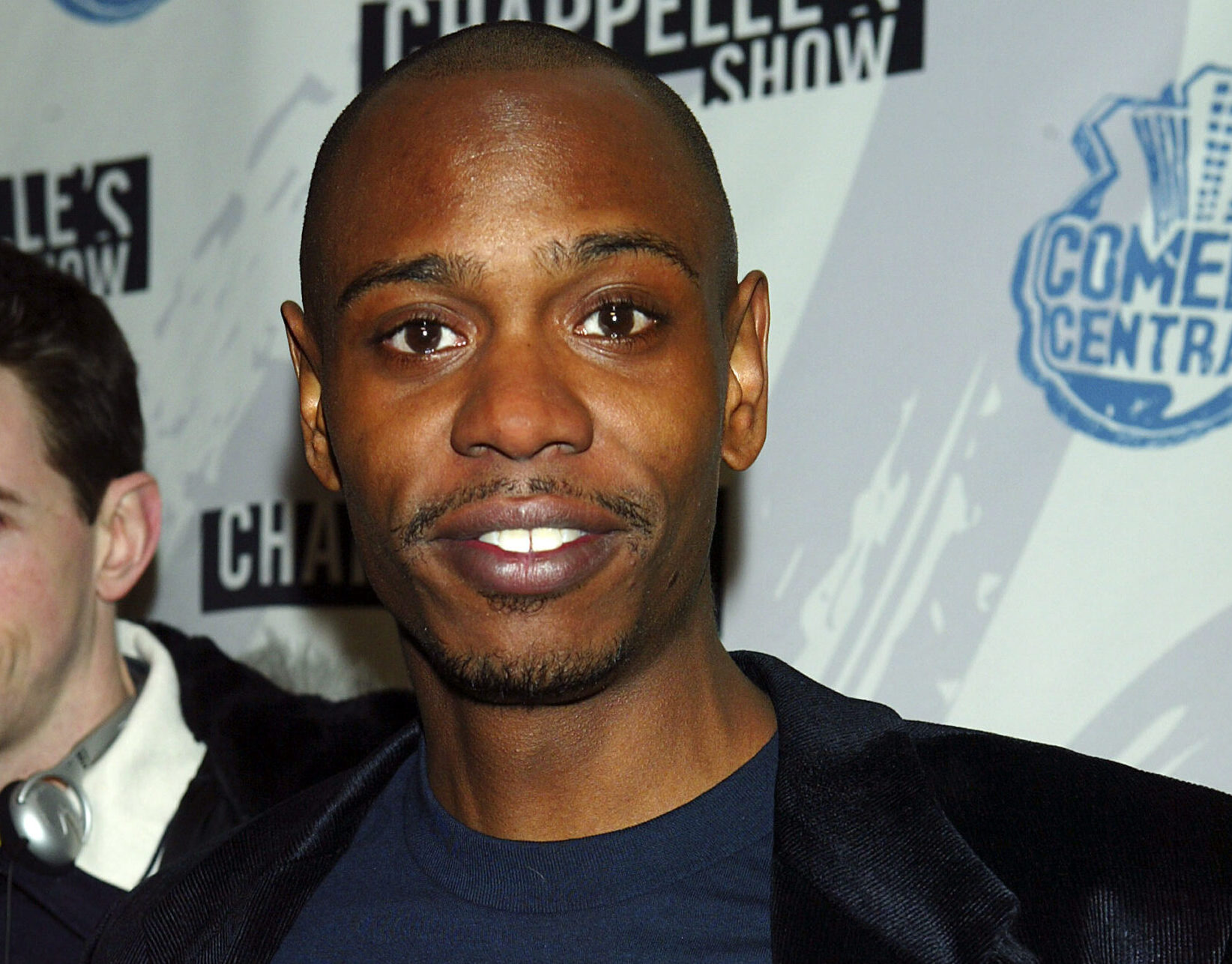
(Photo by Scott Gries/Getty Images)
Introduced Major Talent
Chappelle’s Show did more than give a platform for the creator, ratings for the network, and two copycat series, Mind of Mencia and Key and Peele. It introduced longtime comedic talents such as Charlie Murphy, Donnell Rawlings, and Bill Burr to audiences, which helped each of their meteoritic rises after the show eventually ended. Murphy was known for putting in the work as a comic and actor, despite having an ultra-famous brother in Eddie, and his True Hollywood Stories segments were breakthrough moments for his career alongside his Time Haters routine.
Rawlings also saw success as a Time Hater but didn’t catch on as a highlight collaborator until the World Series of Dice sketch from Season 2, which showcased Ashy Larry for the very first time. He has since joined the great pantheon of Chappelle Show characters such as Tyrone Biggums, Leonard Washington (both played by Dave), Negrodamus (Paul Mooney), and the Robot Dancing Robot Guy (played by set designer Karl Lake).
Bill Burr, who appeared in the “Guy’s Night Out” and “Racial Draft” sketches, has become one the greatest comedians of the generation and is revered as an elder statesman of the stand-up game, with appearances in Breaking Bad, The Mandalorian, and his own animated series F Is For Family.
Comedian, director, podcaster, and writer/producer of the sketch show, Neal Brennan, has been part of previous Chappelle projects and has since gone on to contribute to Inside Amy Schumer‘s The Daily Show and launch his own stand-up career.
Revitalized Major Talent
The show not only introduced new talent but also revitalized some older names and reignited their careers by introducing them to a new generation. As Charlie Murphy made a name for himself with “True Hollywood Stories,” he also reintroduced the world to Prince and Rick James by telling tales of their early escapades and another side of their personality. Prince was known for many great things but not for his basketball acumen. Rick James was an iconic artist famous for “Mary Jane” and being a rockstar, instead of “a habitual line-stepper,” as Murphy described him.
But after those sketches (with both artists portrayed by Chappelle), another wave of their career manifested, as those portrayals and accompanied “I’m Rick James, bitch” became an (overused) phrase in popular culture. “Cocaine is a hell of a drug,” but after the sketch, he toured with Teena Marie and gave his final performance at the fourth annual BET Awards on June 29, 2004, before passing a couple of months later.
Meanwhile, Prince and Chappelle became genuine friends after the latter’s famous depiction. The artist found the portrayal funny, and when Chappelle later left the show, the comedian went on to say he was the only person he could relate to and understood he wasn’t crazy for walking away. The sketch even inspired the artist to make a song, “Breakfast Can Wait,” a play on the punchline of the True Hollywood Story.
All three men involved in these segments, Murphy, James, and Prince, have sadly died, but their memory lives on in their art and this show.
Another reintroduction came for legendary stand-up and comedy writer Paul Mooney, who saw a second wave of popularity thanks to his Negrodomus character and Ask Paul Mooney segments. His stint on the show introduced the comedian to mainstream audiences, as only folks in the know knew how much Mooney contributed to comedy behind the scenes and why he was as revered as he was before his passing, as well.
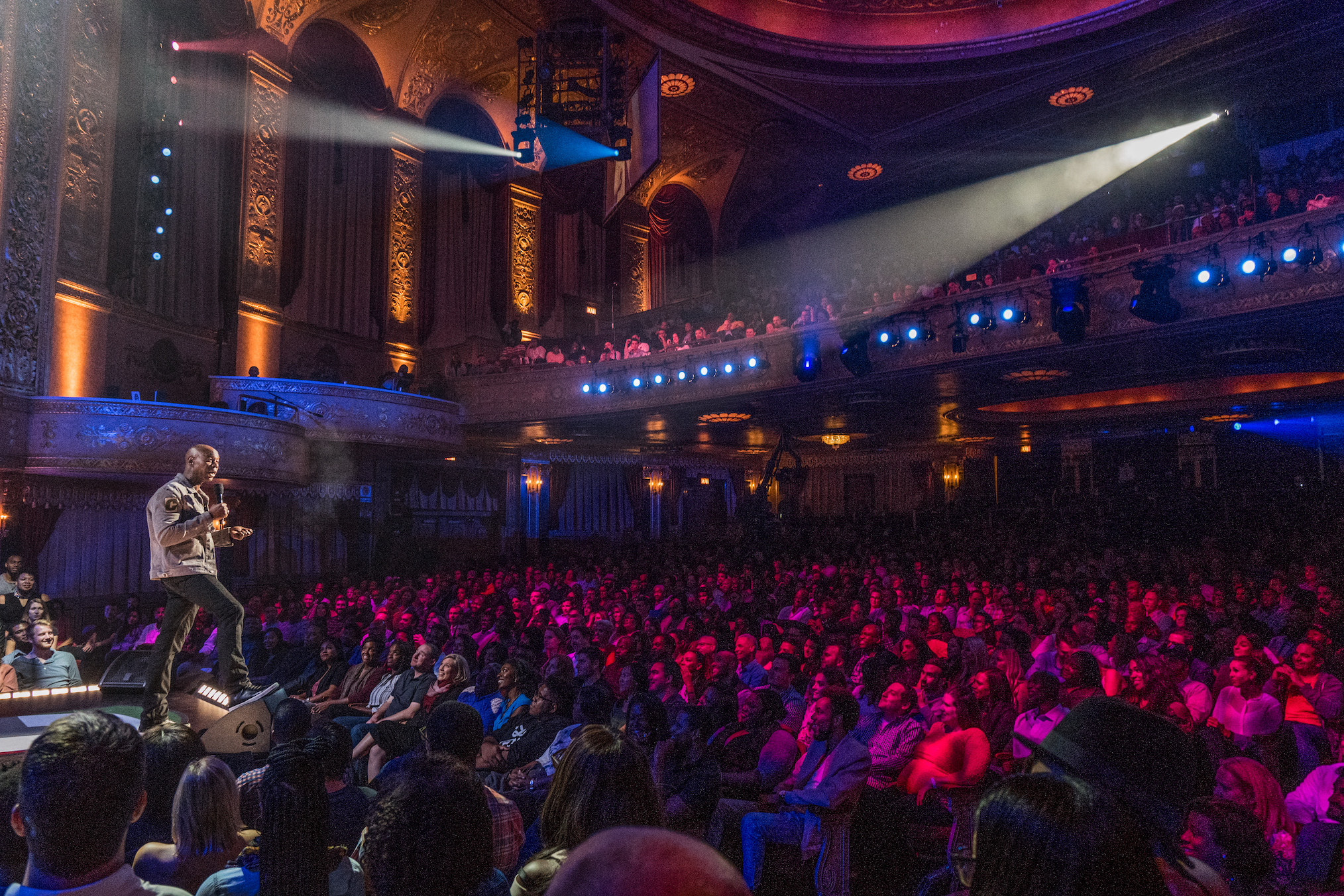
<athieu Bitton
Honest Discussions
In the spirit of Mooney (probably why he was called to be involved in the show), Chappelle was looking to have honest discussions based on current topics focused on touchy subjects. Although the purpose of any sketch show is to make audiences laugh, Chappelle was interested in using humor to open the floor for critical thinking and subsequent discourse. And it did just that during its time, unlike now, where folks claim shows critical of identity politics and racial commentary can’t be produced.
It took to task situations like R. Kelly’s sex tape during an era when no one took his actions quite as seriously as now. It examined the actions of George Bush and how his actions would be reflected as a black president, terms ahead of Barack Obama. It also took on celebrity trials and how the justice system is different for even highly successful black people than their white counterparts.
Fast forward to today, R. Kelly is in jail, Barack, as well as The United States Space Force now exist (but the weapons of mass destruction did not), and the accused are treated as guilty more than certain celebs who are actually tried in court for their crimes (i.e., Michael Jackson and Robert Blake, Kyrie Irving and Woody Allen).
There’s no show on television holding up a magnifying glass to society and what ails us as a nation these days. There’s no Twilight Zone with life lessons or Chapelle’s Show to make it all go down with laughter. There are just countless Twitter threads and YouTubers now, with only a fraction of the nuance (or production value, for that matter.)
All of This Is in Danger of Being Forgotten
After Chappelle left the show and infamously declined Comedy Central’s huge offer for a new season, he faced a plethora of ridicule and bad faith for his decision. After returning from South Africa, he went on Oprah and Inside the Actors Studio in February 2008 to give context for his departure. But after those appearances (and the network airing unfinished sketches to serve as a third season of his show), the comedian mostly stayed out of the limelight until a Netflix deal offered him $20 million for three individual specials.
The first two specials—Deep in the Heart of Texas and The Age of Spin—debuted on the streamer on March 21, 2017. Texas was originally filmed in April 2015, while Spin was filmed in March 2016. They were the comedian’s first special in 12 years and were Netflix’s most-viewed special in its history, eventually winning Grammy Awards. By this time, Chappelle had won the status of one of the greatest comedians of all time. It looked like the comedian was returning to the fold on his terms and was enjoying his victory lap for sticking with his decision to leave Hollywood for a while.
However, the third special, Dave Chappelle: Equanimity, arrived at the end of 2017 and was joined by a surprise fourth special called Dave Chappelle: The Bird Revelation. Although both specials would go on to win Grammy awards; (Equanimity won an Emmy), critics and people on social media were less enthusiastic about it, and Chappelle was met with ire for his comments about transgender men and women.
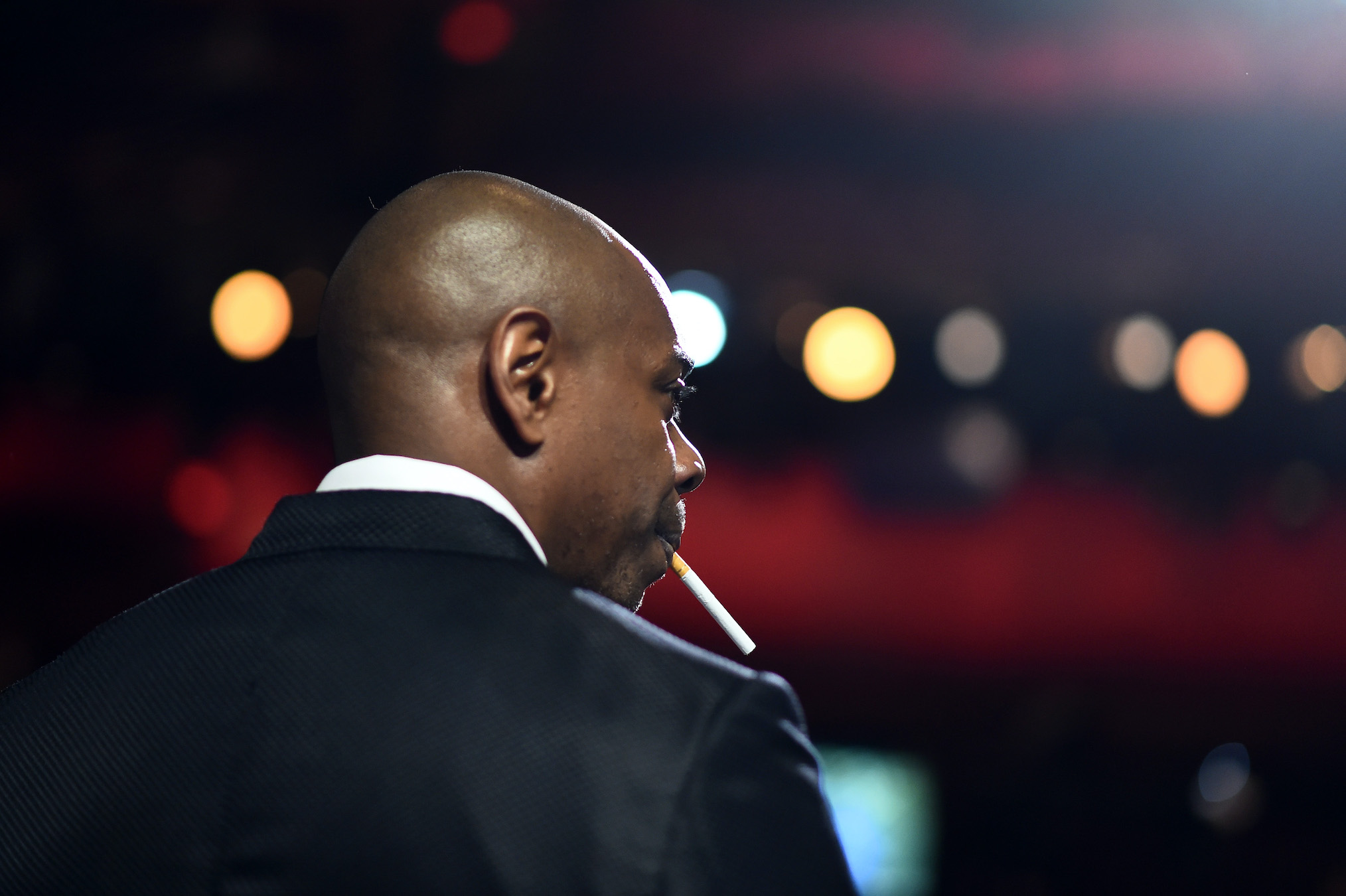
(Photo by Matt Petit/A.M.P.A.S via Getty Images)
But instead of laying off the topic, the comic would double down on examining these subjects in a fifth Netflix special, Sticks & Stones, which delivered another Grammy and Emmy for the comedian. However, it too was met with mixed reactions, with some highlighting his jokes about cancel culture and the #MeToo movement.
As time went on, he would go on to comment about George Floyd in a performance called 8:46, serve as host on SNL, and blast ViacomCBS for not cutting him a check for acquiring the license to Chappelle’s Show, which worked out in his favor.
During a performance at the Hollywood Bowl, Chappelle was attacked on stage by someone carrying a concealed weapon. When asked why he targeted the comedian, the attacker said, “I identify as bisexual … and I wanted him to know what he said was triggering. I wanted him to know that next time, he should consider first running his material by people it could affect.” In 2023, Chappelle was invited to the Black Star Line festival in Accra, Ghana, and many felt his invitation reflected the country’s new bill to send LGBTQ or intersex couples to prison for five years. As such, he was booed during his discussion with Chance the Rapper after making a comment the rapper deemed as misconstrued.
Chapelle’s scathing criticism of the nation is from a bygone era, and it’s not an era that can be recreated or duplicated, no matter how hard you try. No matter the intent, the comedian is becoming more known for his controversies than his victories during the height of his career.
As a comic, there’s an innate part of you that wants to push the boundaries and examine visceral reactions, but if nobody is willing to listen, then it comes off as trying to be edgy. There’s more at stake than retaining the title of GOAT amongst peers and true fans of stand-up; there’s a legacy to consider. Chappelle’s Show was a ship in the grand sea of 2000s culture. It brought up an entire generation of teens and spearheaded several careers in the process. It shaped what comedy was during its time and delivered sketches that remain in the lexicon of all Americans today. It should be celebrated on its 20-year anniversary, as its impact can never be duplicated again. But if Chappelle isn’t careful, it may end up on the list of “problematic” things we shouldn’t revisit due to its creator.
From TV Guide Magazine
Crime, Comedy & Convenience Stores: Unwrapping Hulu's 'Deli Boys' With the Cast
Cupcakes, corndogs…and cocaine?! Two brothers find themselves in a hilarious pickle when they inherit an unseemly bodega biz in Hulu’s new comedy Deli Boys. Find out how The Sopranos and Real Housewives of Orange County influenced the cast. Read the story now on TV Insider.



